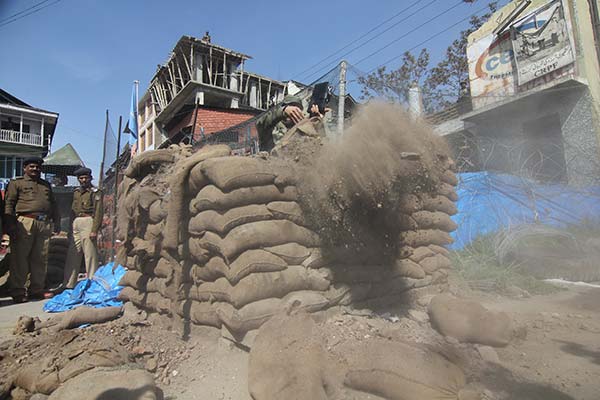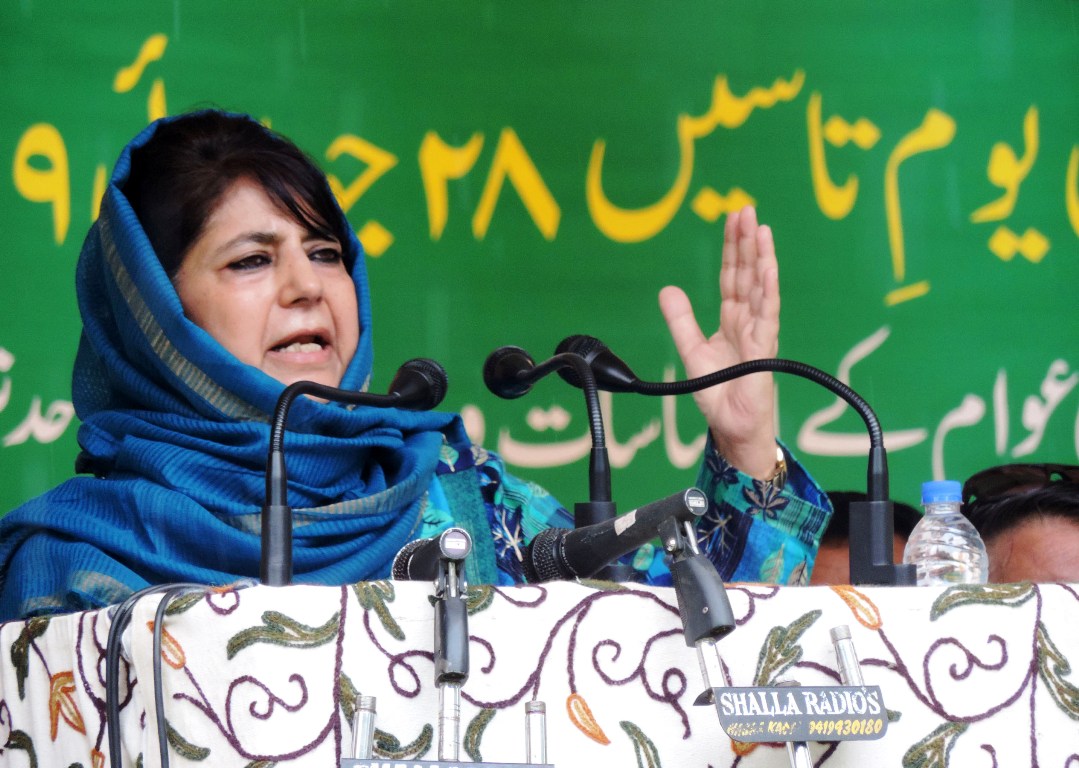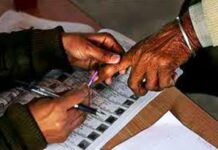by Saifullah Bashir
SRINAGAR: Describing Article 370 as the roadblock to Kashmir’s development and security, on August 5 last year, Home Minister Amit Shah read down the historic constitutional safeguard. A year after, most of Srinagar roads are blocked, in one or the other way.

Srinagar streets are dotted with sandbag bunkers, with ubiquitous security men. In certain areas, these new 1990-style bunkers have encroached part of roads. At a few places, one of the two-lanes of the roads has been taken over by these new outposts.
Jahangir Chowk, a landmark, not a far away from the civil secretariat – te seat of power, lost a fair share of the little available space to the CRPF bunker bordered by concertina wire barricade. Earlier the place used to be a transit minibus stand.
The stand is now pushed to the main road, thus adding a bottlenecked for the movement. Space apart, this new security bandobast is being seen as key to insecurity by many. Drivers feel, the bunker on the spot they earlier occupied could have not impacted their business alone but has made them vulnerable. “We always want to leave the place as soon as possible. Most of the times we leave with half the passengers,” one of the drivers, who insisted he may not be identified, said.
Hyderpora Chowk is another major spot where bunker has throttled the entrance towards the main city from Budgam, airport and the two sides of the bypass. This area is the hub of tuition centres and the only connection between the airport with Srinagar. “I always opt to go the other way rather than crossing the bunker,” said Insha, a girl student.
The paramilitary men have taken over the road and set up formal obstacles that occupy a major part of the 2-lane road on both sides. In order to see that everything goes as per the script, they have a group of security men overlooking the spot from atop the by-pass flyover.
Residents said the same bottleneck was used to choke the traffic movement after August 5, 2019, to record “mass traffic” movements for the TV.
On the newly built flyover that took almost a decade to complete, has a bunker on the middle of it. Adjacent to the bunker is a makeshift toilet, camouflaged by a tarpaulin.
Baba Dawood Khaki Bridge, the landmark that separates the old city from the uptown has a bunker at the starting of the bridge. It encroaches almost half of the key culvert, with drums and barricades placed around. This road is the main way to Khyber Hospital. The encroached space housing security grid stands erected in such a way that in traffic jams are quite frequent. The squeeze is from both sides.
Commuters said they lose a good time in passing this landmark especially when the paramilitary and police choose to search vehicles or to go for body frisking of passengers.
“These bunkers sprouted up across Srinagar days ahead of August 2019. Now they are more or less permanent,” Khalid, an old city student and a daily commuter on the arterial road said. “These bunkers have cramped up already congested places.”
There has been a lot of deployment of the paramilitary forces weeks ahead of August 2019. Though a portion of the additional deployments was sent back, Srinagar still has ubiquitous deployments, almost everywhere. The security grid continues to ferry its members to roads in the hundreds of civilian buses which were hired in July 2019.
The scene outside the Maharaj Gunj Police station gives the locality a ghost look after 6 pm. Shopkeepers lower their shutters early; people take alternative routes to reach their destinations. It has an almost 40 feet wide road and the bunkers there have occupied more than half of its space.
A shopkeeper said that the bunker has economic costs on his businesses. “This Chowk has turned into a no-go zone. Hardly, any pedestrian walks through this road in evening hours,” he said. Maharaj Gunj, the erstwhile main market of the city, is the main cultural centre because most of the historic spots are located in this area. The rise of the bunkers, residents alleged, has disfigured the area.
The situation is the same, almost everywhere. Srinagar has major deployments on all its entries. Umar who commutes from Pulwama to Srinagar to reach the city centre Lal Chowk for his work says he has to navigate almost three bunkers from entering into the city limits to his workplace. The first bunker he has to cross is at Lasjan Bypass, then within only a kilometre away, Umar has to pass another zigzag-near the Mehjoor Mausoleum. “It takes me almost 15 minutes daily to pass the checkpoints.”
“I find it ironical that administration is talking about making Srinagar a smart city,” Umar added.
These bunkers have cropped up even on the main highway between Qazigund and Anantnag. Apart from offering the security vehicles passage first, the security-men manning these bunkers quite often stop passengers’ vehicles and private transport for check and frisking. The recent attack on CRPF in Pampore is expected to lead to more deployments in the coming days.
The reports appearing in the media suggest that the CRPF is in the process of seeking permission for the land to build permanent battalion camps at nine locations in Jammu and 20 in Kashmir.















